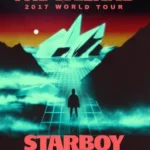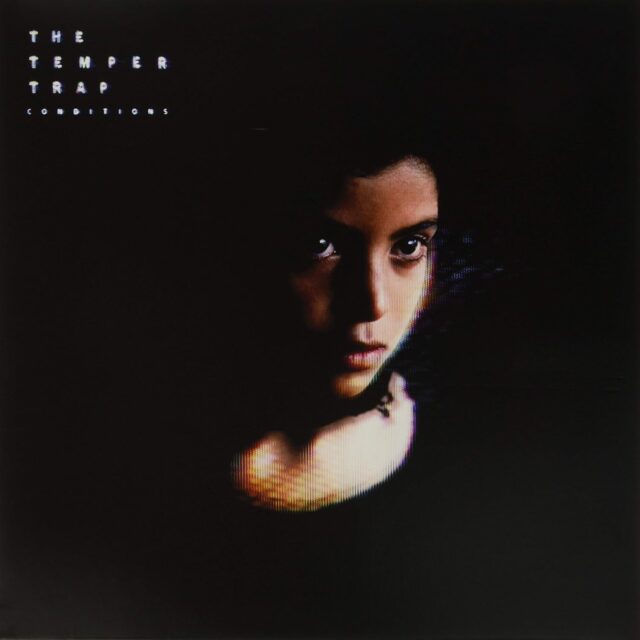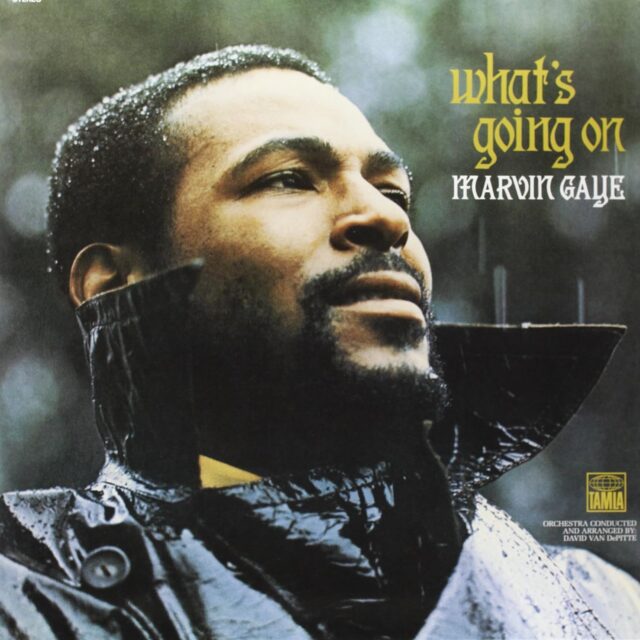To understand how The Weeknd became a Starboy, one must understand him as just a boy.
Abel Makkonen Tesfaye was born on February 16th, 1990, in Scarborough, Ontario, Canada.
An only child and living in a small apartment, Tesfaye was raised by his mother and grandmother. He was first taught to speak Amharic, an Ethiopian language, and then English at age 5.
His parents, Samra and Makkonen Tesfaye, never marriedand went their separate ways in 1990, shortly after his birth. His mother worked multiple jobs in nursing homes and hospitals to provide for the family.
“First language I learned… Had no dad, and mom was working 24/7, so my grandma raised me until I was like 5. No English,” said Tesfaye. “I didn’t have a father figure in the house. No boys around. Just me and my mom. But I didn’t want a sister, I wanted a brother. And then… You realize you can’t have that,” said Tesfaye.
“I had to learn everything from TV,”recalls Tesfaye. Growing up, his influences were from TV, films and music, including Michael Jackson, Prince, R. Kelly, along with music from Ethiopia.
“People forget—’We Are the World’ is for Ethiopia. At home, if it wasn’t Ethiopian music, it was Michael. He was our icon,” Tesfaye recalled.
“I grew up with this music in my household. [Michael Jackson’s] ‘Don’t Stop ‘til You Get Enough,’ from Off the Wall, is actually the song that helped me find my voice. It’s the reason I sing,” Tesfaye stated. “The sadness I inherit is from the Ethiopian music my mother would play. A lot of sad songs about heartbreak. Even though I couldn’t really make out what they were saying, I could feel it.”
“I’ve been told my singing isn’t conventional. Ethiopian music was the music I grew up on, artists like Tilahun Gessesse, Aster Aweke, and Mahmoud Ahmed. These are my subconscious inspirations.”
A pivotal moment came in 2007 while attending Birchmount Park Collegiate Institute. Tesfaye found the brother he always wanted in La Mar Taylor. The two met on the first day of business class and talked about music, films, and did drugs. Lots of drugs.
Six months into the school year, feeling suppressed in Scarborough, Tesfaye persuaded Taylor to join him, drop out, and also move out of their homes.
As his mattress went into a van, Tesfaye remembers his mother had “the worst look anyone could ever have. She looked at me like she had failed.”
Tesfaye and Taylor shared a one-bedroom apartment in Toronto’s Parkdale area with another friend, Hyghly Alleyne, for $850 a month. This was mostly covered by welfare checks and selling weed. For food and entertainment, they shoplifted from supermarkets and got high from various substances, including painkillers, weed, MDMA, Xanax, cough syrup, cocaine, ketamine, and mushrooms.
Eventually, they were evicted. Tesfaye told girls he loved them and bed-hopped when he couldn’t find a place to sleep.
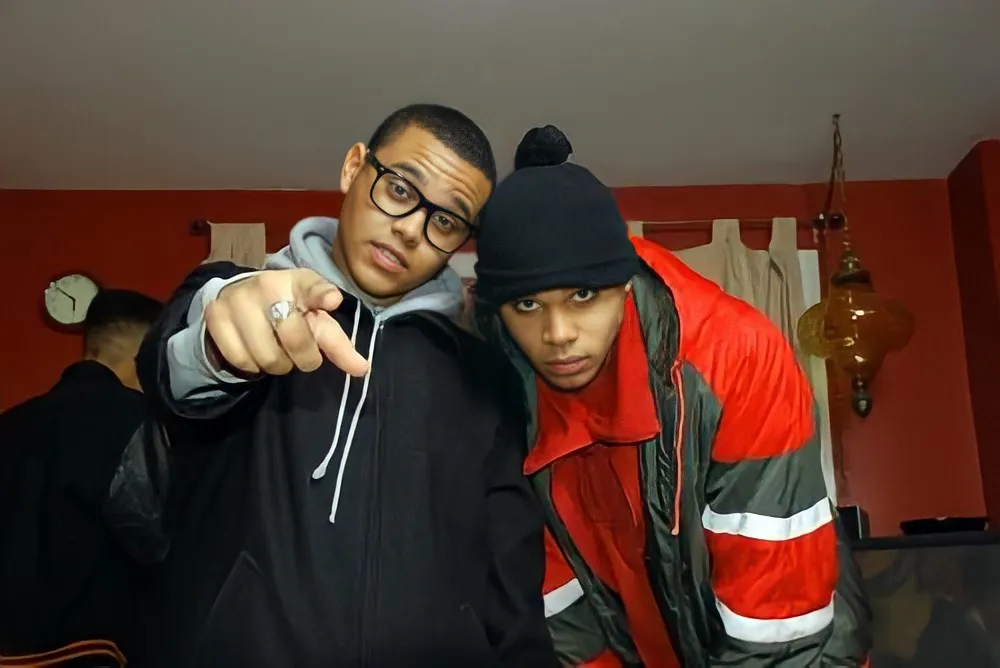
In January 2008, Tesfaye began writing lyrics, singing first to himself, then with Jesse Bedard Dempster, a Scarborough native who went by the rap name JesseRay. The two met through friends, shared an interest in music, and eventually formed Bulleez n Nerdz, a rap/R&B duo.
Why the name? Well, “because we were bullies, but we looked like nerds,” says JesseRay.
Tesfaye decided to be known as Kin Kane.
Bulleez n Nerdz began making music together, creating five songs, including their first track Godzilla, as well as Have You Tonight (ft. Majes-D), When The Grip Hits, Krispy, and Blue. The duo planned to release mixtape tracks.
Bulleez n Nerdz gained interest from music managers Tyse Saffuri, founder of Entyse Entertainment, and his partner Nicki Clarke.
Entyse Entertainment focused on artist management and development, and it was through this that Saffuri met Kashif Majeed, a new producer in Toronto known as Kid Klassic.
“It was 2008, I had just moved to Toronto and didn’t know anyone so I would work with anyone/everyone. This guy Tyse started introducing me to his clients. One of the artists was a rap/singing duo called Bulleez n Nerds,” said Kid Klassic. “Someone brought Abel and his friend Jesse to my studio as they needed some production/recording. Abel was rapping/rap singing and I was like ‘damn this kid has a really cool tone!’. I asked him if he wanted to come back on his own and we could try recording/writing.”
Bulleez n Nerdz performed in bars in Toronto, such as The Nile, and at the University of Toronto in front of “about 1,000 people.” “We had fun,” said Kin Kane during his first-ever radio interview. The duo started to uploaded songs to SoundCloud and YouTube.
However, Bulleez n Nerdz was short lived. In 2009, Dempster retreated as a friend committed suicide. “I wasn’t making music. I wasn’t talking to anyone. I was in this depressed state,” said Dempster.
Tesfaye moved forward. Kin Kane did not.
Tesfaye was looking to “find someone bigger” than Tyse Saffuri to help him with his music.
Starting to make Noise
Tesfaye like the idea by Kid Klassic and decided to reach out. They eventually formed a writing and production team called The Noise with two other vocalists, Tyler Done, and Natalie Di Luccio.
The Noise signed with Lavish Life Management, a management company that shops material to major labels with the goal to be included in a song or album.
“We’d try to emulate songs that would appeal to specific acts (eg.Justin Timberlake, Chris Brown),” said Kid Klassic. “The first song we created together was called Superhero. He didn’t exactly know what harmonies were but his ear was so good, I would sing him the parts line by line and he’d nail it. And I have to emphasize, his work ethic was amazing.”
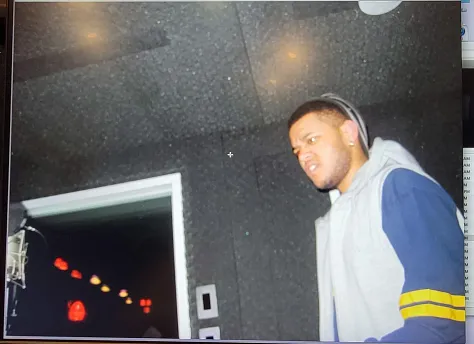
The Noise created the songs Do It, Material Girl, Rescue You, Birthday Suit, Love Through Her, Appointment, and X-Ray.
Toronto’s very own Drake reportedly heard the track ‘Birthday Suit‘ and considered including it on his debut album, Thank Me Later, but it was ultimately omitted.
“We sent out hundreds of our Noise demo’s on CD to labels… when an A&R from Sony/ATV reached out to us after we sent out The Noise demo’s… They were inviting us to their studio every Wednesday to work on music. Unfortunately they were just leading us on.”
La Mar Taylor and Hyghly Alleyne were also busy. On October 13th, 2009, they created the Twitter account ‘She’s So Lovely,’ abbreviated as ‘SSL.’ The company focused on photo and video production, interviewing artists, and posting content on their website and various social media platforms such as Facebook and Tumblr.
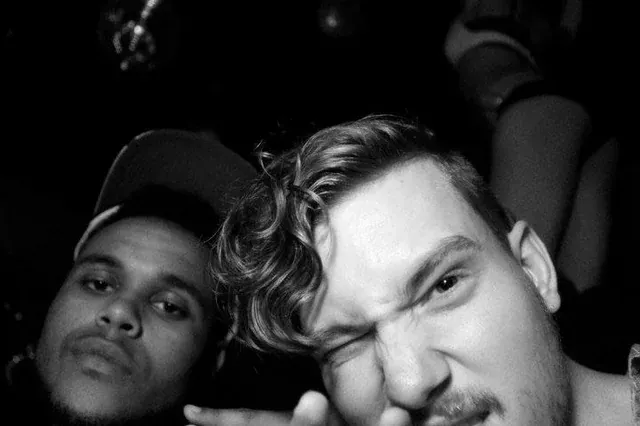
A Rose has thorns
In 2010, Tesfaye continued to record music and got a job. “I was struggling at the time. A good friend of mine hooked me up with a job at American Apparel, and I was folding clothes there.”
Enter producer Jeremy Rose late 2010.
Rose’s girlfriend worked at a poutine joint called Poutini’s in Toronto. He used to hang with a couple of guys who worked there, and Tesfaye also knew these guys. One night they were all hanging out together.
”That’s where I met Abel, he was hanging out at their house. I was showing them some things in Ableton, because they were interested in that stuff and I was playing the beat for ‘What You Need.’ I had that thing for a couple years and I didn’t know what to do with it. Anyway, Abel was there and he started free-styling on top of it,” said Rose.
“When I met him I heard some of the stuff that he was doing… It was this group, with him and another producer and it was called The Noise. They were a straight kind of R&B, just really light and kind of candlelight… [sings] ‘I wanna see you in your birthday suit,’” said Rose. “And I was just like, ‘Aw, fuck that shit. No man, let’s talk about, fuckin’ and getting too high and trying to fuck bitches and it not working out. Let’s get really grimy about it.’”
Rose asked Tesfaye “if he wanted to work on something—I had this idea for a dark R&B project. I think I talked to Curtis Santiago [aka Talwst, local Toronto R&B dude] about it, but he wasn’t really what I was looking for because he was on some other thing. Abel seemed to suit the project.”
Tesfaye and Rose started hanging out, working on music, and partying. “We started as a group; it was he and I, and we called ourselves ‘The Weekend,’” which Rose says he came up with.
Four songs were created; What You Need, Loft Music, The Party, and The Morning.
The She’s So Lovely Twitter account shared The Weekend songs What You Need on September 10th at 10:58pm EST on Tumblr. Then, on October 20th at 3:43am EST saw The Morning, followed by Loft Music on November 8th at 9:12pm EST. All on YouTube, via Tumblr and Twitter.
The dynamic was going well. Until it didn’t.
“I don’t know if it was a change in his heart or the people around Abel trying to guide him, but he was starting to push for doing club tracks and I didn’t really want to [do that,” recalled Rose. “I don’t know if it was a change in his heart or the people around Abel trying to guide him, but he was starting to push for doing club tracks and I didn’t really want to.”
“I left. He dropped the ‘e,’” said Rose. “I was like, ‘You can have those three or four tracks, I’ll give you the stems, just take ’em, but I don’t want to work with you anymore.’ I was really congenial about it, but I told him, ‘Just make sure that you give me credit.’”
Creative differences.
Tesfaye moved on, along with the songs.
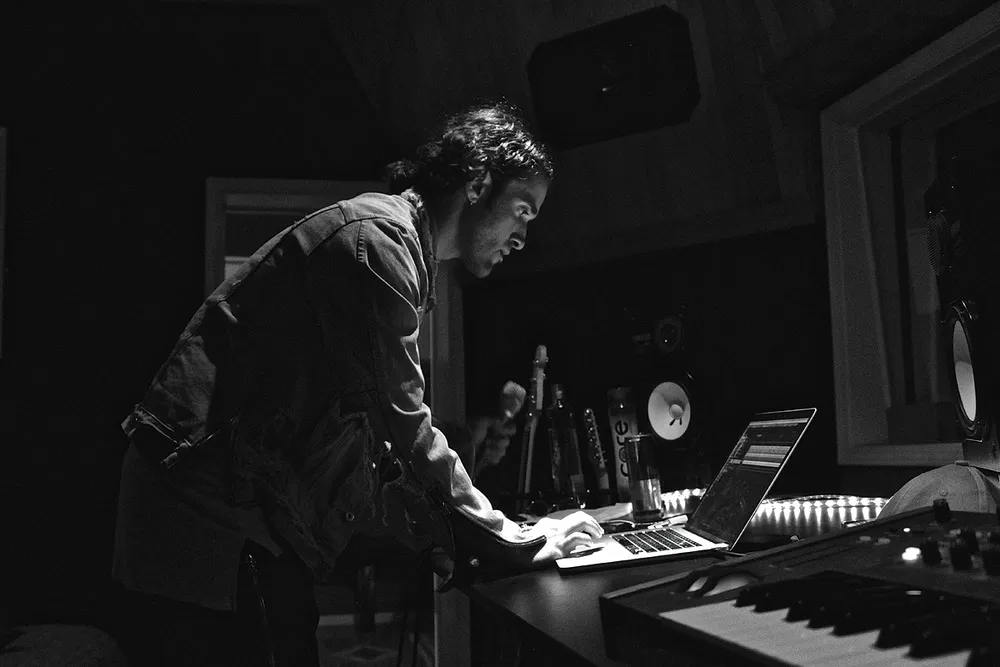
Another pivotal moment happened in December 2010. While at Dream House Studios, a recording studio in Toronto, Tesfaye met producer Carlo “Illangelo” Montagnese.
“It was a chance meeting, but the moment we met, I knew that this was it. We went into the studio, and had this instant connection, and the very first thing we co–wrote and recorded was ‘Crew Love’,” said Illangelo.
Soon after, Tesfaye was introduced to Henry ‘Cirkut’ Walter, Adrien ‘AG’ Gough, and Martin “Doc” McKinney.
“When I first met Abel, he’d already been writing and recording with various people and had put four songs on the Internet a few months earlier,” recalled McKinney. “Henry ‘Cirkut’ Walter and Adrien ‘AG’ Gough had been working on one of these tracks as part of a production team I was mentoring called The Dream Machine. They told me to check Abel out, so I invited him into my studio on the first of January, and quickly established that natural connection which happens occasionally in music between an artist and a producer or writer.”
The birth of The Weeknd
Tesfaye surfaced with the name “The Weeknd.”
“I hated my name at the time though so I tried it as a stage name. It sounded cool. I took out the ‘e’ because there was already a Canadian band named The Weekend (copyright issues).” said The Weeknd about his new persona.
La Mar Taylor uploaded the songs as audio files to YouTube early December — The Morning, What You Need and Loft Music under the channel “xoxxxoooxo,” then shared the links to Facebook.
This time, the people heard it. Felt it.
Drake was parked outside his Toronto apartment at 15 Fort York Boulevard with his friend and manager, Oliver El-Khatib. It was raining and El-Khatib played him The Weeknd.
“I remember that I heard two songs… And I’ll never forget… that was the night I realized that this is the greatest thing that happened to music in a long time,” said Drake.
“This is the first place I ever heard The Weeknd’s music right here. Shoutout to Oliver [El-Khatib], of course, my brother. Oliver played me The Weekend right here,” said Drake on Instagram. “This is my old building in Toronto. We were parked out here. It was raining.”
On Sunday, December 12, 2010, at 3:46 a.m. EST, Oliver posted songs from The Weeknd on the OVO’s blogspot site, with “Introducing The Weeknd” as the statement.
This is when everything elevated. Out of obscurity and delivered a stage.
People commented on Drake’s blog, “YO!!!! GOOD MUSIC, so WHO’S THE WEEKEND????? Wanna know more about…,” and “Can we get more info on the The Weekend. All I can find are a couple of tracks but no wiki or articles on them/him/she.” Aling with “Damn this is good where can I buy this?,” and “…The Weekend is killin it! Someone sign them NOW!!”
An other anonymous comment read, “to exclusive for wiki look out in 2011 nuff said…..SSL.”
SSL soon stopped, and the creation of XO, an independent label formed by The Weeknd, La Mar Taylor, and managers Wassim “Sal” Slaiby and Amir “Cash” Esmailian.
Who are Slaiby and Esmailian, and how did they become part of The Weeknd?
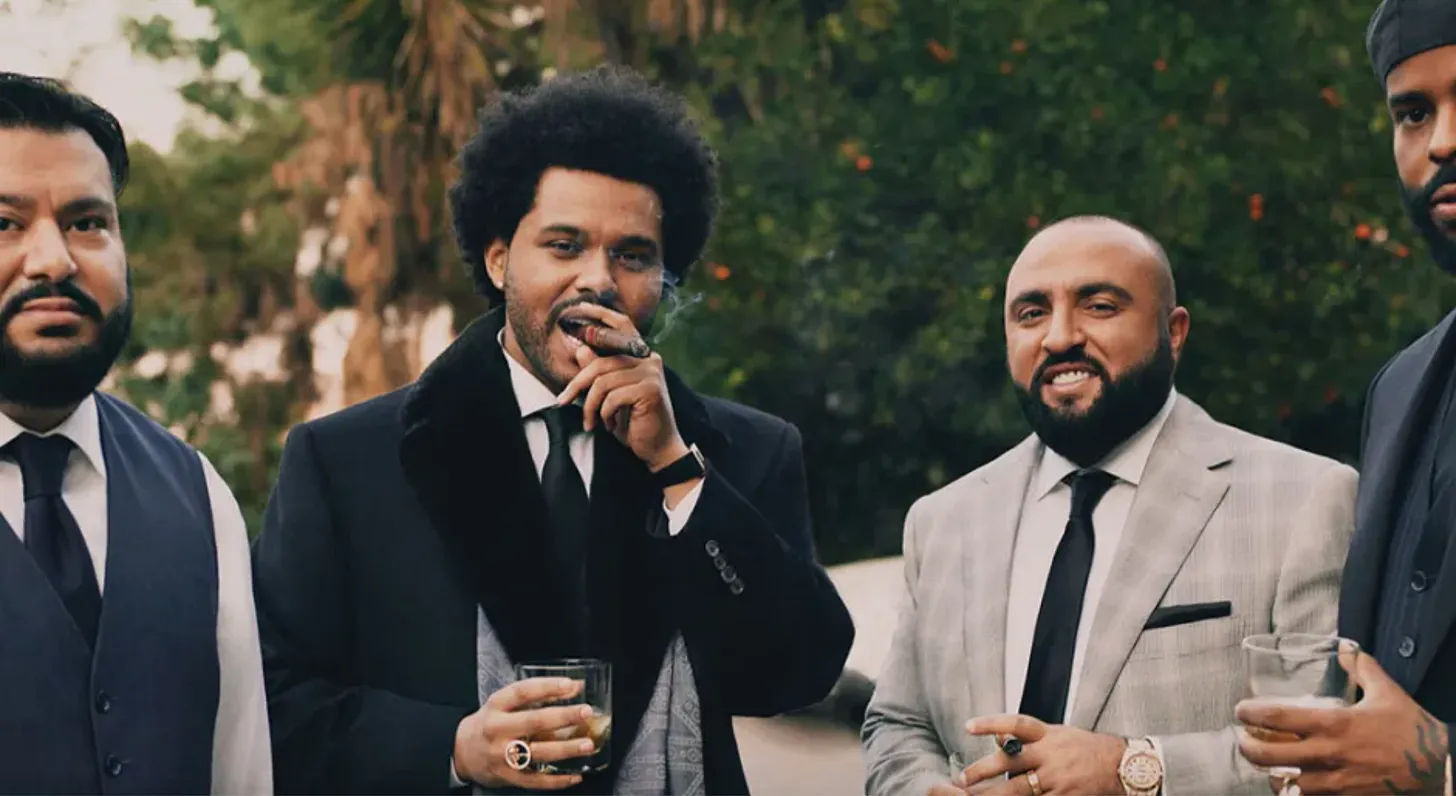
The world with Cash and Sal
Slaiby was born in Ghazir, Lebanon. During the civil war in 1996, he fled by boat to Cyprus, then Germany, and eventually came to Montreal, Quebec, in Canada with just over $9,000 from his mom.
In Montreal, Slaiby had periods of homelessness. In his late teens, he made the decision to move to Ottawa, where he later met Ahmad Balshe, a rapper known as Belly. This meeting proved pivotal for both, as Slaiby, who had no formal experience in the music industry but had drive, went on to manage Belly’s career. It also marked his entry into the music industry.
Slaiby was also known as “Sal,” which means Serious About Life.
The two formed Capital Prophet Records (CP Records) in 2002, an independent label co-founded by Belly and Sal to launch Belly’s career, and also support local artists.
Belly introduced Sal to Amir “Cash” Esmailian, who at the time was deeply involved in Ottawa’s nightlife and hip-hop scene. He gained the nickname “Cash” from his talent in managing deals and organizing events and parties.
In 2002, Cash worked as head of street promotion for CP Records and built relationships with local artists, promoters, and influencers.
In 2007, Belly and Cash moved to Miami to focus on breaking into the U.S. music scene for his debut album, The Revolution. Sal stayed in Ottawa overseeing operations for CP Records, and co-managing Belly with Cash.
Then, in mid-December 2010, a friend, Hawk Marley,, sent Cash tracks by The Weeknd. “This kid is ahead of his time. I knew it right away,” said Cash, who “left everything” and departed for Toronto.
The day Cash arrived he hit the clubs with the one that “would change the sound, change the world of music.” They became friends, eventually becoming “the manager, the road manager, security and the driver.”
Sal was also introduced to The Weeknd, recalling that “La Mar and Abel were going through a hard time. They had a different team that screwed over their businesses. The songs were flying. Their career was flying. But their business was in a danger zone because they didn’t have the right team.”
“We surrounded ourselves with people who thought they knew everything and almost literally ruined our chances,” said The Weeknd about the people previously around him.
The Weeknd takes form
With the unplanned co-sign from Drake, interest in the enigma that is The Weeknd reached a constant buzz, gaining new fans and prompting others to want more from this unknown artist—more music, more background.
Popular media outlets such as Pitchfork and The New York Times heard the tracks and wrote about them.
The New York Times wrote, “Each is a marvel of texture, drawing from the aching moans of screw music and the sexual impulses of early 1990s new jack swing, all buried in a hazy cloud that’s part too-cool affectation, part bleeding-out puddle.”
“If you haven’t heard much about the Weeknd, it’s because there isn’t much info out there on them — that is, if the mysterious project… is a ‘them’ and not just a ‘him’ or ‘her,’” said Pitchfork.
“I think that’s really what captivated everyone,” said Taylor, about the rise in awareness of The Weeknd.
The pieces fit together
With the XO structure in place, The Weeknd and its team planned. The Weeknd continued to create his art. Sal and Cash co-managed The Weeknd, and Taylor directed the creative.
Building on the momentum while maintaining the mystery, The Weeknd withheld information about his identity and declined interviews, which in turn fueled speculation and anticipation of the next move.
“I was everything an R&B singer wasn’t. I wasn’t in shape. I wasn’t a pretty boy. I was awkward as fuck. I didn’t like the way I looked in pictures — when I saw myself on a digital camera, I was like, ‘Eesh’,” recalled The Weekend.
“Me not finishing school — in my head, I still have this insecurity when I’m talking to someone educated,” he said.
The Weeknd was preparing the world to experience him.
During this time, The Weeknd was a lyrical machine and worked with producers Illangelo and Doc McKinney to refine his sound and produce songs.
Drake continued the love and asked The Weeknd to collaborate for his second album Take Care, which further amplified his image.
When The Weeknd decided to give more, Wicked Games was uploaded. Drake shared this to the masses when on March 6th, 2011, stating “OVOXO Gang” with a link to “The-Weeknd.com.”
People commented, “Banger! I’ve missed RnB like this.” And, “Bring your love, I’ll bring my shame.” “Love this song: just listened to it over 10 times,” and “Amazing Song. I feel in love with the music.”
March 21st, 2011 was a Monday
Nine tracks made up a mixtape called House of Balloons. This released on March 21st, 2011 for free on The Weeknd’s website. People couldn’t click fast enough.
This title was named after a real house. The Weeknd said that House of Balloons is “65 spencer in parkdale.” This is where he rented with La Mar Taylor and Hyghly Alleyne.
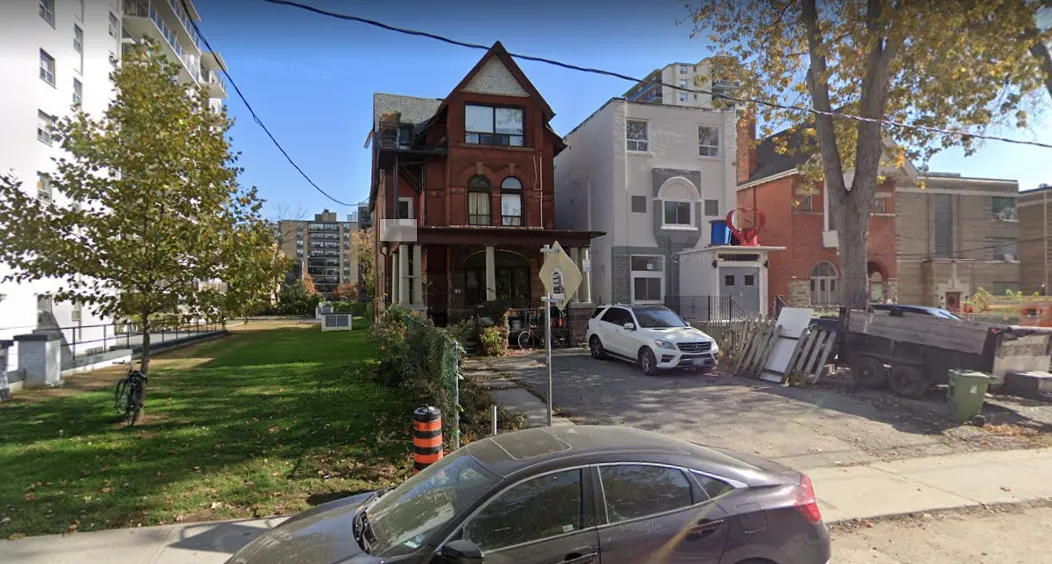
The album cover for House of Balloons was created by La Mar Taylor. It lacked any image of The Weeknd and featured a black-and-white photo of a disheveled party with a nude woman in a bathtub surrounded by balloons.
The songs on House of Balloons are High for This, What You Need, House of Balloons / Glass Table Girls, The Morning, Wicked Games, The Party & The After Party, Coming Down, Loft Music, and The Knowing.
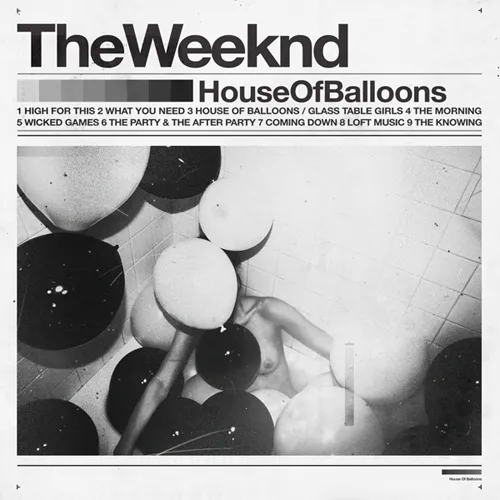
Pitchfork’s Joe Colly reviewed House of Balloons on March 29th and declared it the Best New Music of 2011, stating “This project has ridden a wave of online buzz thanks in part to a deliberately murky backstory, but the music, a kind of spectral R&B, transcends hype.”
“Debauchery is obviously nothing new in R&B, but this takes it a step further– the drugs are harder, the come-ons feel predatory and lecherous, and the general feeling is self-hating rather than celebratory,” continued Colly. “And even though the image of nightlife painted by the Weeknd isn’t a place you’d ever want to live, it’s one that’s frankly very hard to stop listening to.”
Rolling Stone’s Will Hermes review said, “It can all be disturbingly raw, even when — especially when — Weeknd overplay the tales of the tragic high life — check the plea “Bring the drugs, baby/I can bring my pain,” on the killing, blue-black “Wicked Games.”
Another review said, “Despite being a free mixtape, House of Balloons feels like a true album, a true labor of love (and pain and hardship and everything else), more genuine than more prominent R&B stars, but perhaps that is due to The Weeknd’s anonymity. The music stands before the image – indeed, defines the image – contrary to so many other artists.”
House of Balloons had over 200,000 downloads in the first three weeks. It was free for all.
The Weeknd takes the stage
Whatever happened inside the mind and body of Abel Tesfaye between mid-December 2010 and Sunday, July 24th, 2011 to fully become The Weeknd is transformation at its highest level.
While withholding interviews and public appearances, HBO miraculously, yet fitting, struck a partnership with XO and featured High For This as its lead song for the trailer to promote the series finale of Entourage.
The 30-second teaser aired through HBO and its websites, YouTube and social media starting May 22nd, and further elevated The Weeknd. One comment noted, “you wanna be high for this…is the theme song …..shits crazy.” Another comment stated, “what’s the name of song?”
Season 8 of Entourage would premier on July 24th, 2011.
The Weeknd was ready for the world to experience him.
On May 24th, Drake announced additions to his OVO Fest 2011 lineup, now including The Weeknd as the opener, followed by Rick Ross. The festival is set for July 31st at the Molson Amphitheater, an outdoor venue with a capacity of 16,000.
While preparing for his reveal, The Weeknd was unknowingly captured checking out random shows in Toronto, such as the unofficial NXNE rooftop BBQ featuring Montreal’s AIDS Wolf on June 17th.
Then, on July 6th, House of Balloons was announced as part of the Polaris Music Prize shortlist. This is a Canadian music award presented annually to the best full-length album, and it was the first time a free download had been included in the shortlist. The Weeknd was not yet signed.
On July 13th, at midnight, The Weeknd announces his first live show at The Mod Club in Toronto on Sunday, July 24th. This coincides with the airing of the first episode of Season 8 of Entourage, and takes place one week before OVO Fest.
The design of show poster for the Mod Club show looks like the cover of House of Balloons. Tickets would be available at 431 Richmond Street West, which was the location of Stussy in Toronto. The price is $20 in advance or $25 at the door. The is “no guest list” and doors open at 8:00pm.
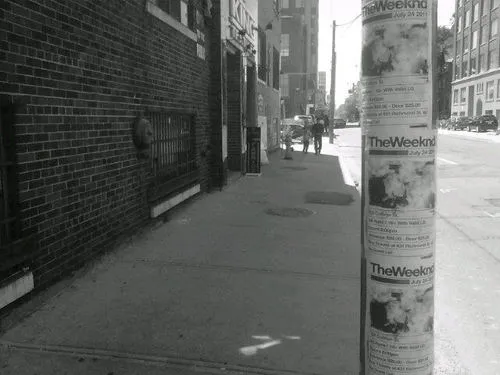
The capacity of the Mod Club is 600 people and tickets sold out within 90 minutes. Ticket holders started to flip for quick profit, with some getting between $250 to $300 per ticket.
The day of the show, July 24th, saw “hundreds of fans” line up along College Street. At night, the temperature was a beautiful 24°C.
Inside the Mod Club, anticipation was building for the sold out show, now estimated at 618 people. Drake was on the balcony in the VIP section, reps from New York record labels were present, including Bad Boy Records. “For a first show? I’ve never seen anything like this,” said one rep.
There was merch: 250 black T-shirts with an image of balloons on the front. The tag featured The Weeknd, the date 24.07.2011, and size.
“He was calm, but still nervous. It’s sort of crazy going from no one knowing you to selling out the Mod Club in a matter of seconds. But he was nervous in a good way… As soon as he hit that stage, he killed it,” said Taylor.
The room was dark, filled with just the right amount of fog from the machine. As the red curtains parted, The Weeknd stood at center stage, dressed in a camo jacket. This was his moment.
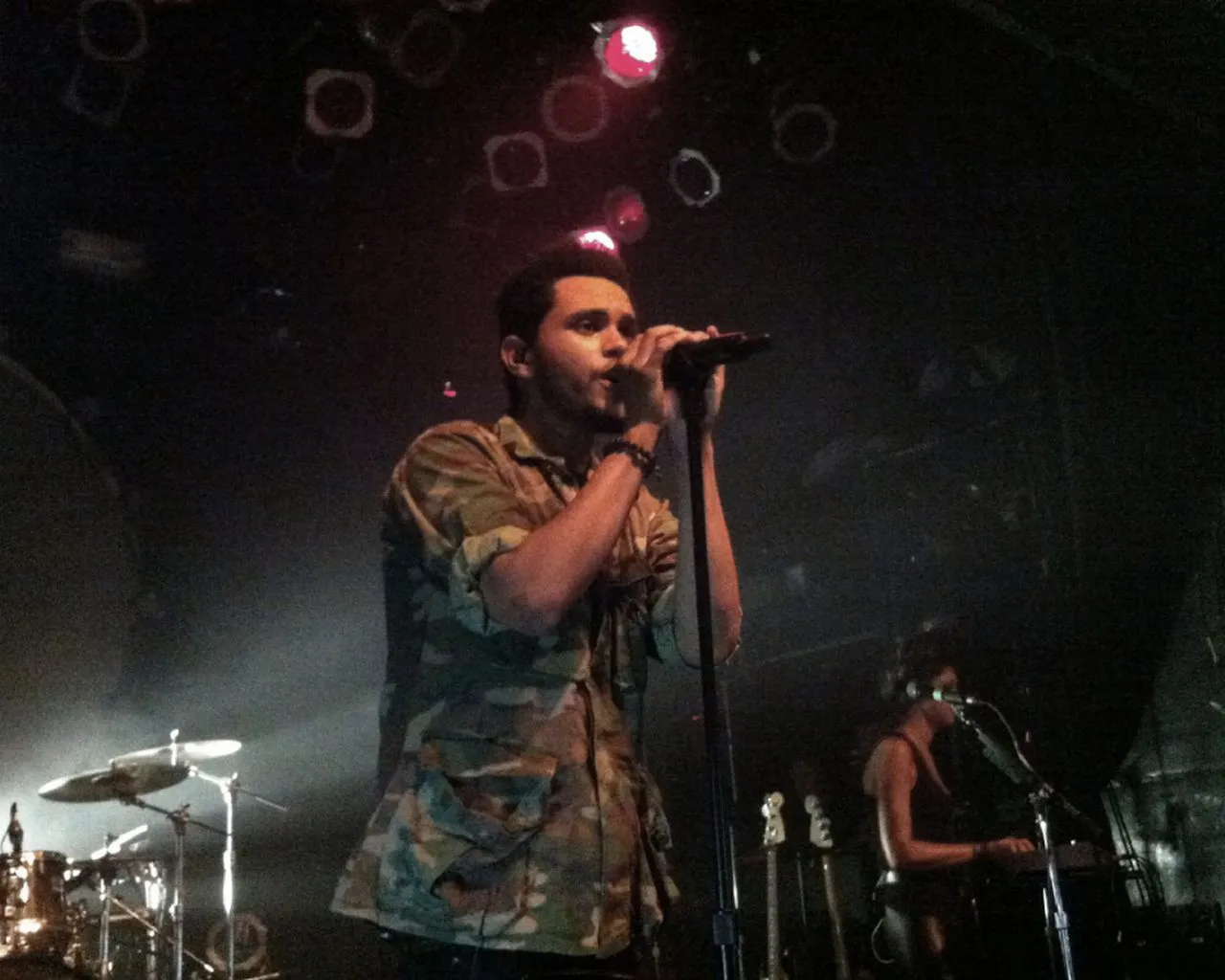
The crowd was cheering, screaming, clapping, yelling, praising him. In return, The Weeknd offered a boyish smile of disbelief, and gratitude.
The three-piece band on stage consisted of Doc McKinney, Illangelo, and a guitarist that Drake uses.
The Weeknd adjusted his earphones, hands confidently placed on the mic. High For This was the first song and the long intro fed energy around the room. He almost started 30 seconds in, however, the crowd was still cheering.
Thirty seconds later, The Weeknd’s vocals surrounded and engulfed everyone present with, “You don’t know.” In that moment, the crowd joined in, singing every single word of the song.
Regardless of the request for “no cameras,” people captured the moment with their BlackBerry’s, iPhone’s, and digital cameras. It was historic to be part of.
The Weeknd was pointing to people in the crowd, smiling, sweating, giving peak stage presence. Living the experience. At the end of song, the craving the audience wanted, what they expected, was met. They needed more. The Weeknd bowed with both hands to the audience in appreciation of them.
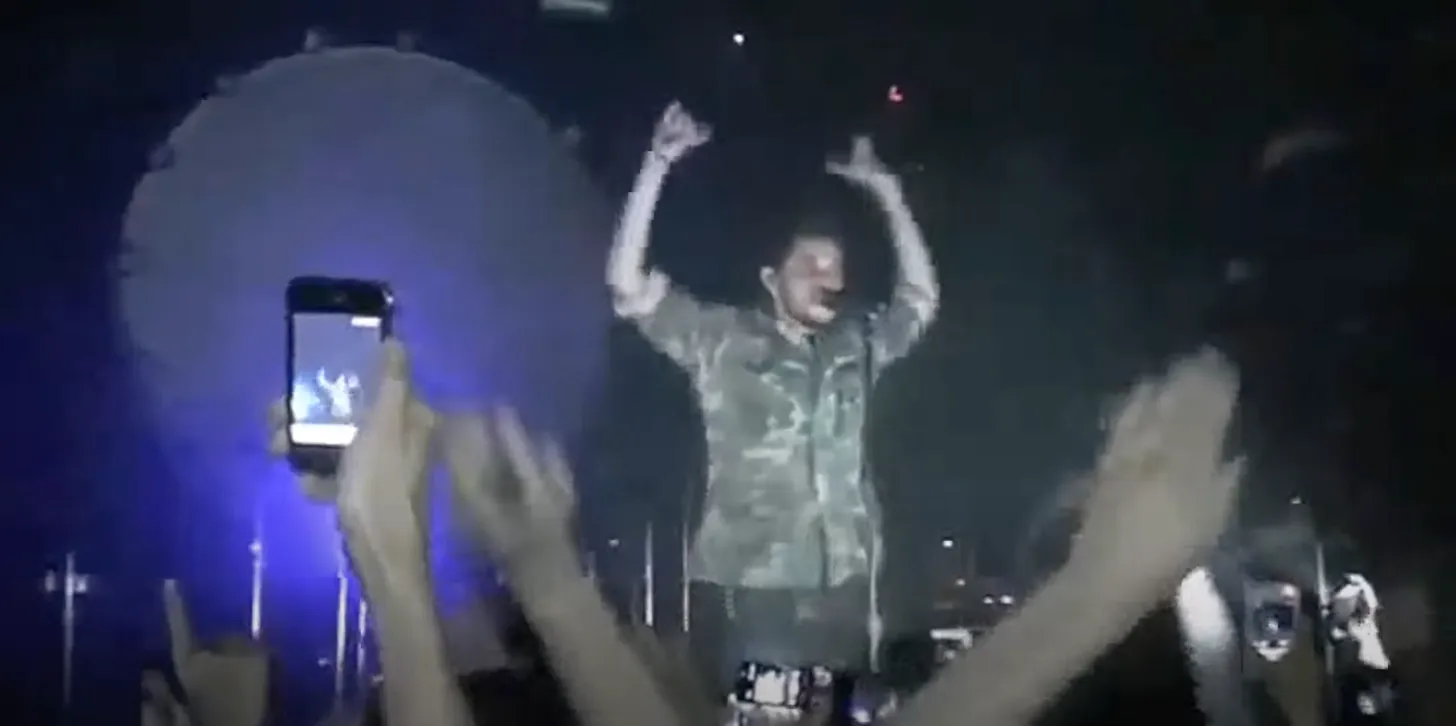
“It was crazy,” said Nate Albert, an A&R executive at Republic Records, “It was totally sold out. The audience knew every word to every song. It was very, very odd. He was standing there very still and the whole crowd was singing along. It was an incredible moment.”
The Weeknd followed with The Morning, then interacted with the crowd, saying, “Toronto XO… You guys are my number one fans… It’s unbelievable. Who’s ready to get fucked up? Who’s already fucked up?”
Coming Down (he played the keyboard), What You Need, The Party & the After Party, and House of Balloons / Glass Table Girls all got crossed off.
When the next song started, people were attempting to sing along, but this was a new song. Unreleased. The crowd was for it—cheering and wanting more, like they needed another hit.
“Baby, I got you, ooh / Until you’re used to my face / And my mystery fades / I got you, ooh,” sang The Weeknd during his song Rolling Stone. He encouraged people to “light this up with your cameras,” and made a gesture with his left hand as if he’s holding a lighter. Drake did it.
Wicked Games, Loft Music, and The Knowing all followed. The show ended, and The Weeknd went backstage. The crowd was hooked and wanted more. Over a minute passed, then another 30 seconds, and now they were chanting, “Weeknd! Weeknd! Weeknd!”
The Weeknd appeared for another song—an unreleased song again, called “The Birds, Part 1.” As the song ended, The Weeknd waved to the fans, put his index fingers together in the shape of an “X,” and exited the stage. The crowd, once again, was chanting, “Weeknd! Weeknd! Weeknd!”
Drake sang every song and, after the show he tweeted to The Weeknd, ‘I am so fuckin’ proud. You performed magic tonight.’
The Morning After
Melody Lau from Rolling Stone was present and wrote a review the next day, stating, “His songs sounded spot-on, if not better, live, proving the wait for Tesfaye has been completely worth it. Though apparent on recordings, Tesfaye’s voice is even more astounding in person; it soared over the screaming crowd, which sang along to every song.”
“The Weeknd is a complete band live. With the help of a drummer, guitarist and bassist/keyboardist, a majority of the samples were recreated onstage, with the laptop merely tucked away side-stage, used sparingly in between everything,” said a fan in attendance.
“Until now, the Weeknd has existed as almost a figment of our collective imaginations, his ascent fuelled by anonymity, his communications coming via Twitter and Tumblr, his music existing only as web-distributed ones and zeroes. He could’ve dissipated like a dotcom bubble. But by bringing his aching digi-laments out of the Internet’s shadows and onto the stage, Tesfaye triumphantly proved that the Weeknd has no end in sight,” said Joshua Ostroff of the Globe and Mail.
“When the concert ended roughly an hour-and-a-half later, not much more was known about The Weeknd except that he’d pulled off one of the most remarkable debuts in the city’s recent history,” said Now Magazine.
“I really wanted people who had no idea who I was to hear my project. You don’t do that by asking for money,” said The Weeknd. “I kind of treat my albums like films when I write them, telling one big story,” he says, before revealing his next step: “More visual candy and hopefully a venture into my first true love, cinema.”
“I know deep down in my heart that everyone would have been successful in their own realm if we’d never met,” says The Weeknd. “But us together — [what we’ve created] wouldn’t have happened without every single one of us in this room. All of the decisions I make, I don’t make without these three people here.”
While one entourage was ending, The Weeknd — now a Starboy — and his entourage were just beginning.
Lyrically: Starboy
“Trilogy was more like, the wealth was the motive. Then after Kiss Land, you finally have the wealth and we’re enjoying it. And then, of course everybody wants to be rich but it comes with its negatives as well,” said The Weeknd in 2016.
Starboy was released on September 22nd, 2016 as the lead single from his album Starboy, which was later released in the Fall on November 25th, 2016.
“Starboy is next chapter in this chronicle, my fans call it chapters, so I guess this is in the fourth chapter… more like braggadocious kind of character that we all kind of have inside of us,” stated The Weeknd.
The song features the captivating, mysterious, and heavily on-point French electronic duo Daft Punk.
“Being able to work with them [Daft Punk] felt like a bucket-list moment, so I really wanted to fight for that. And then we got into the studio… we literally did Starboy and I Feel It Coming in like two or three days,” said The Weeknd. “We went to Paris, I came into the session, and Thomas and Guy-Man had already started a track, which was I Feel It Coming. I was writing the lyrics… and probably finished it in about an hour. I went into the booth and started recording.”
The Weeknd continued, “While I’m recording the record, through the talkback, I can hear some sort of feedback—some sort of drum loop every time. Thomas is like, ‘Okay, next take…’ So I’m like, ‘What the F is that? What is that sound?’”
“So I walk in, and it’s Guy-Man on his phone, or on his laptop or something, and it’s the drums of Starboy. I say, ‘Put that shit on the f’n speakers. Let me hear that…’ and it’s just this crazy, monstrous loop. So I put I Feel It Coming to the side, and I’m writing this. Literally wrote it straight away,” stated The Weeknd.
Starboy, the song, is The Weeknd’s way of expressing his success, along with the fame, wealth, and transformation that comes with it.
The opening lyrics set the mood and is for anyone who listens, has listened, or will listen in the future:
I’m tryna put you in the worst mood, ah.
What follows is a detailed look at a luxurious lifestyle that only a few will experience.
P1 cleaner than your church shoes, ah
Milli point two just to hurt you, ah
All red Lamb’ just to tease you, ah
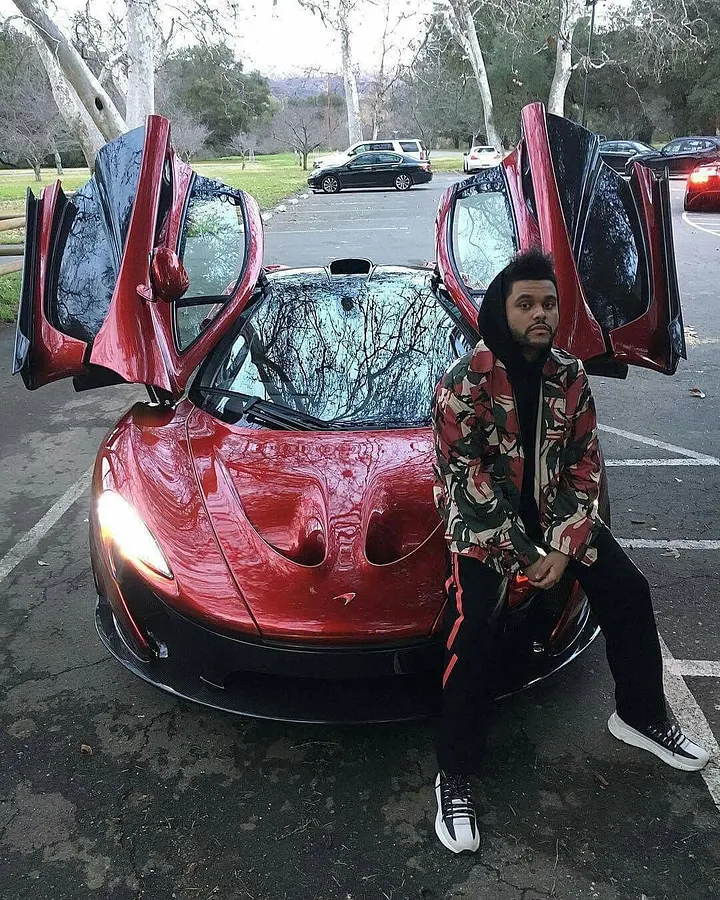
The Weeknd owns a deep red $1.2 million McLaren P1 and keeps it meticulously clean—so clean that it’s even cleaner than someone’s church shoes. This is also the first mention of religion, highlighting the tension between his P1 and church shoes—symbolizing either driving on the road of materialism or walking on the path with God.
To further put us in “the worst mood,” the “All red Lamb’ just to tease you, ah,” is The Weeknd’s red Lamborghini Aventador LP 750-4 Superveloce (SV) Roadster, valued at $550,000 USD.
“I don’t really splurge. I just really started buying expensive stuff now… I just bought all these cars… It’s this new thing I’m on… recently I’ve been really interested in McLaren, of course Ferrari, Lamborghini. McLaren really grabbed my attention,” said The Weeknd.” “I put it in the Starboy video. It inspired me for that song and I think it’s a great representation of where I’m at.”
None of these toys on lease too, ah
Made your whole year in a week too, yah
There’s no insight into who The Weeknd is referring to or whether he’s simply addressing anyone beneath his status, as he owns everything—and more importantly, owes nothing. He further reinforces this by highlighting the immense wealth he earns each year.
And finally, the end of the first verse, within seconds of the song starting, we are in the absolute “worst mood” because our game is also off. “Main bitch outta your league too, ah / Side bitch outta your league too, ah.”
The Weeknd has it all.
“With Starboy, I didn’t think it’d be a single. I thought it was me just being like star boy. It didn’t feel like an album record. It just felt like a dope vibe. I brought it back to Toronto and played it for the team and they lost their f’n mind. Everybody’s like yeah, this is the next single,” said The Weeknd.
After Trilogy, The Weeknd wrote Kiss Land in 2013. The lyrics revealed his life at the time:
I got a brand new place, I think I’ve seen it twice all year
I can’t remember how it looks inside
So you can picture how my life’s been
I went from starin’ at the same four walls for twenty-one years
To seein’ the whole world in just twelve months?
That’s a complete flip. Three-years later, The Weeknd says his “House so empty, need a centerpiece,” suggesting he’s still away from home and he needs to place something decorative in the center of a table.
These lyrics have another possible meaning—a deeper meaning with another religious connection. The Weeknd’s ‘house so empty’ may refer to his own spiritual emptiness that needs to be filled. If the definition of ‘centerpiece’ is the ‘central importance‘ of something, like a God, then The Weeknd may be seeking for a guiding force. Matthew 16:26: “What good will it be for someone to gain the whole world, yet forfeit their soul? Or what can anyone give in exchange for their soul?”
Then we swing back to a life of someone playing a role in a movie:
Twenty racks a table, cut from ebony
Cut that ivory into skinny pieces
Then she clean it with her face, man, I love my baby, ah
The Weeknd went from glass tables to a Starboy—owning tables made from ebony, each costing $20,000. His girl then takes the skinny pieces of ivory—cocaine—and handles it, using her face, which he adores.
You talkin’ money, need a hearin’ aid
The net worth of The Weeknd in 2016 was $55 million, a staggering amount, and even more impressive considering the environment he grew up in.
You talkin’ ’bout me, I don’t see the shade
Switch up my style, I take any lane
The Weeknd doesn’t have time for gossip and can easily adapt to whatever comes next, simply by being able to ‘switch up my style, I take any lane.
While switching lanes, The Weeknd is also switching up vices for the pain: “I switch up my cup, I kill any pain.” A part of all the success.
(Ha-ha-ha-ha-ha, ha-ha-ha-ha-ha)
Look what you’ve done
(Ha-ha-ha-ha-ha, ha-ha-ha-ha-ha)
I’m a motherfuckin’ starboy
(Ha-ha-ha-ha-ha, ha-ha-ha-ha-ha)
Look what you’ve done
(Ha-ha-ha-ha-ha, ha-ha-ha-ha-ha)
I’m a motherfuckin’ starboy
Is The Weeknd constantly laughing at us and where we are when this song is playing? “(Ha-ha-ha-ha-ha, ha-ha-ha-ha-ha).” He could have done “Oh-oh-oh-oh-oh, oh-oh-oh-oh-oh. but that would have set a different tone. Perhaps “Eh-eh-eh-eh-eh, eh-eh-eh-eh-eh.” This speaks to me on a Canadian level.
“Look what you’ve done” signals that his fans played a pivotal role in making him “a motherfuckin’ starboy,” something he’s extremely grateful for, especially his XO crew.
But as the lines repeat, “Look what you’ve done” takes on a deeper meaning, hinting at the other side of opulence.
The song continues by constantly flexing wealth, such as, “Pull off in that Roadster SV, ah / Pockets overweight, gettin’ hefty, ah.”
“Coming for the king, that’s a far cry, ah” suggests he has no competition—everyone else is on a different level. “The competition, I don’t really listen,” confirms it. The Weeknd is only competing against himself.
Coming for the king, that’s a far cry, ah,” could also be a nod to Michael Jackson, who was a strong influence and indisputable in his own way.
In his 2014 song King of the Fall, The Weeknd sings, “Them Fall shows every year like a birthday.” Trilogy, Kiss Land, Beauty Behind the Madness, and Starboy were all released in the fall.” So the lyrics in Starboy, “I come alive in the fall time,” is completely accurate.
“I’m in the blue Mulsanne bumping New Edition” refers to a $300,000 blue Bentley and how The Weeknd enjoys playing New Edition while driving it.
Legend of the fall, took the year like a bandit
In these lyrics The Weeknd compares himself to Brad Pitt, a symbol of fame. “Legend of the fall” connects to his success during the fall season, when he releases his music, and also to the movie Legends of the Fall that stared Pitt.
The Weeknd claims he “took the year like a bandit,” meaning he owned the attention of the music scene. In 2016, Starboy dominated the charts, went platinum, and earned The Weeknd a Grammy. So yes, if a bandit is one who seizes opportunities, then yes, he did take the year.
Bought mama a crib and a brand new wagon
Now she hit the grocery shop looking lavish
“Imagine if you were in my shoes and one of your old buddies is now seven-Grammy-nominated, and you literally know this guy didn’t have five bucks in his pocket a couple years ago,” said Jesse Bedard Dempster, who was JesseRay from Bulleez n Nerdz. “He bought his mom a house. It’s so inspiring.”
The Weeknd also bough his mom a car and she can proudly venture to the grocery store in style.
“She’s just happy that I’m doing something that I love… She’s just happy I’m not in jail at this point, you know, and it’s just like the fact that I get to make music, and make hundreds and thousands of millions of people happy,” said The Weeknd. “You know, make her proud, and my family proud, and you know really make a name and really represent where I come from, and the culture that I’m from because there aren’t many Ethiopian artists like American Canadian pop.”
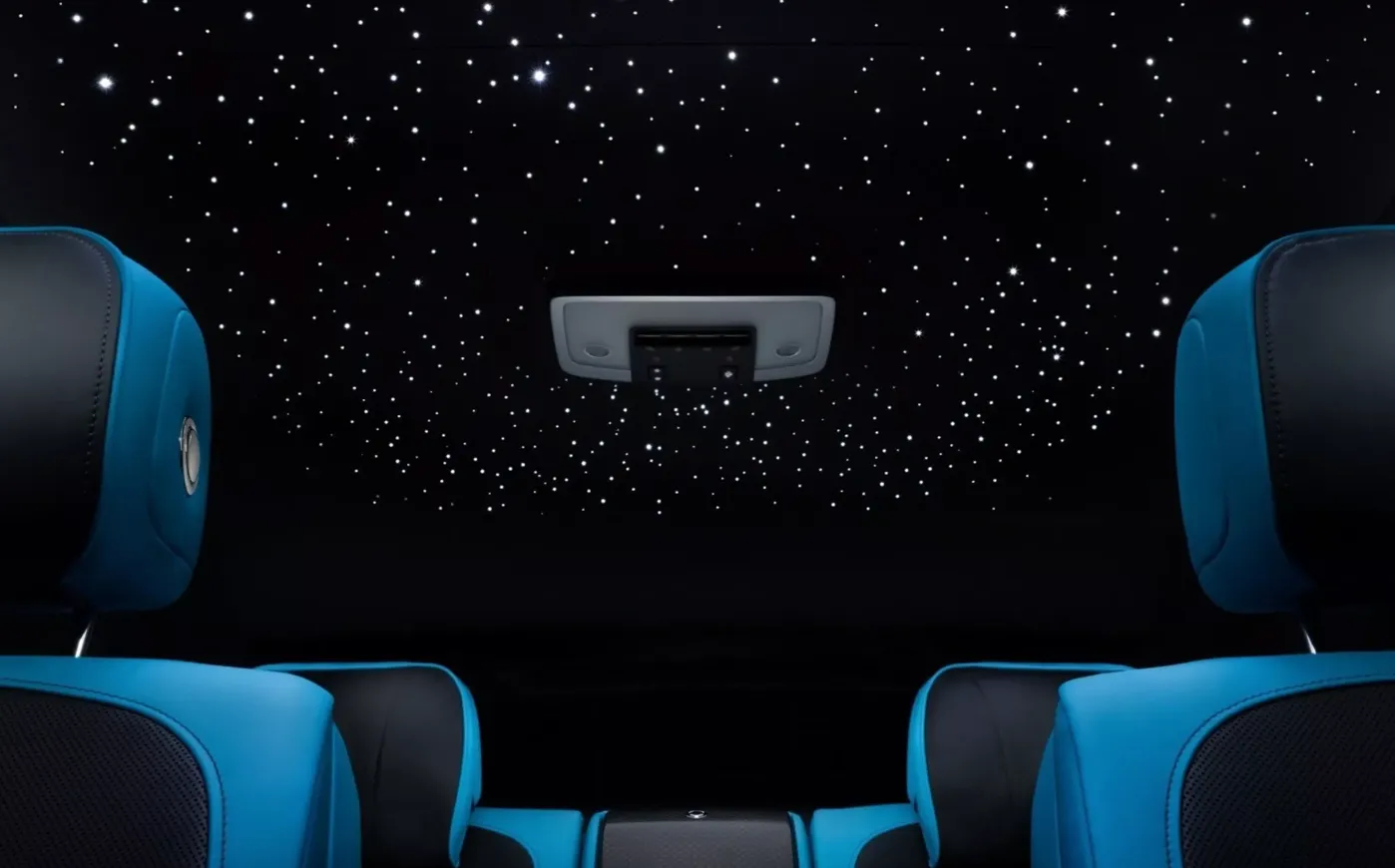
This follows another mention of a car with “Star Trek roof in that Wraith of Khan,” a gesture to the Rolls-Royce Wraith Kahn Edition, which comes with a $400,000 price tag. A custom feature in the car, called the ‘starlight headliner,’ adds hundreds of fiber-optic lights to the driving experience, and transforms ‘the roof into the illusion of a star-filled night sky.’
”Girls get loose when they hear this song” is probably true.
A hundred on the dash get me close to God
We don’t pray for love, we just pray for cars
Three additional references to religion, but only one option: keep pumping the pace. It’s an adrenaline rush of higher powers that can only be tempered and teased with new lanes.
Just to sink it all in a bit further, The Weeknd sings the pre-chorus and chorus one more time, ending with “I’m a motherfuckin’ starboy.”
He is.
The official music video for Starboy has to be mentioned. It’s a visual masterpiece of character development. The Weeknd ends one character of The Weeknd and introduces another character of The Weeknd. A transformation that happens every fall. Although, I’ve come to believe that who The Weeknd is in character is also who The Weeknd is out of character.
A Starboy.


